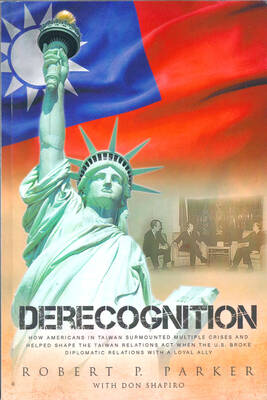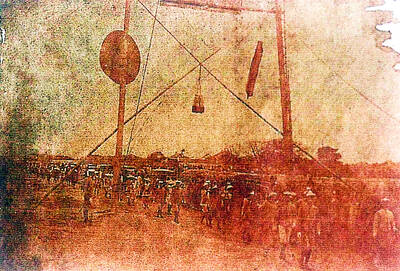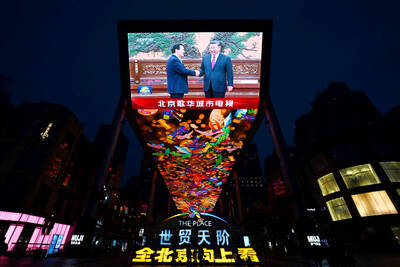Once upon a time, the world was a simpler place, and the person who took a bow at the end of a catwalk show was the person who designed the clothes.
At the end of Sunday’s catwalk show for the Parisian couture house Emanuel Ungaro, staged under the Louvre museum, a 23-year-old blonde and a 35-year-old brunette strode the catwalk holding hands. But all eyes and, more crucially, lenses rested on just one of them: Lindsay Lohan, the actor who is perhaps better known for her frequent stints in rehab, her multiple drink driving arrests and very public love affairs than for her work in films such as Mean Girls or Freaky Friday.
Lohan took the bow as “artistic adviser,” a role defined by the Ungaro boss, Mounir Mouffarige, as being “a dancing, swinging, living doll” and “a moving advertising campaign” for the brand. Lohan herself has said she “oversees” the work of the woman who took the bow with her, Estrella Archs, 35, a veteran of the Prada, Hussein Chalayan and Nina Ricci design studios, who was appointed chief designer alongside Lohan.
Visitors to the Emanuel Ungaro studio during the hectic last days of preparations for this collection noticed that while Archs put the finishing touches to the clothes, Lohan was nowhere to be seen. Not that Lohan was neglecting her duties: she was to be found on Twitter, fulfilling her role by inviting celebrity friends such as Lily Allen to the show.
It would be too easy to dismiss Lohan as window dressing. She may not have cut patterns or pinned toiles, but her influence could be seen throughout this collection. Whether this is a good thing is very much open to debate: there were dresses in the collection that one could all too easily believe to have been created by a designer with no experience or training.
Ungaro appointed Lohan because it wanted attention, and it certainly got its wish. The scrum of photographers, television crews, bloggers and journalists jostling to get close to Lohan after the show almost brought down the temporary wall built to divide the backstage area from the catwalk.
Willingly or not, Lohan certainly attracts cameras. Despite her tender years, she has crammed a lot into her life, and her metamorphosis from wide-eyed Disney starlet to hard-living, bisexual adult guarantees the Parisian brand some dark and edgy Hollywood glamour as well as the dangerous whiff of past scandals.
The Ungaro heritage is one of femininity and romance, ideas that historically have been represented on the catwalk by delicate, refined fabrics and finely drawn floral patterns. Yesterday, the same message of femininity and romance was broadcast, instead, by a recurrent theme of lovehearts. There were large black plastic heart-shaped earrings and cute velvet heart-shaped evening bags; there were black hearts printed all over a cream blouse and red ones on a short skirt; there were blue hearts picked out in sequins all over one black evening jacket and heart-shaped cutouts decorating another. There was even a pair of heart-shaped stickers that went some way to preserving the modesty of a model dressed in an open jacket with nothing beneath. To sum up the new Ungaro brand identity, then: there were a lot of hearts. It was perhaps the first catwalk show that could be happily summed up on Twitter, which was quite possibly the intention.
Micro-mini skirts and leggings in bright ruched satins pointed to the direction of the new artistic adviser: Lohan is often photographed in almost nonexistent skirts and already designs a range of leggings under the label 6126. (The name refers to the birth date — 1 June 1926 — of Marilyn Monroe.)
“I feel like there’s a correlation between everything I do, whether it’s pop music or film,” said Lohan last month when her Ungaro role was announced. The actress, pictures of whom looking “tired and emotional” are frequently found in the tabloids, underlined this synergy yesterday by bursting into tears halfway through her catwalk turn. As Lohan found herself overcome with emotion in front of the photographers, Archs could be seen gripping her hand and guiding her firmly backstage.
The shock appointment of Lohan is seen as a bold — even desperate — roll of the dice for the house of Ungaro, which has struggled to find a voice in fashion since its founding designer retired in 2004. A succession of talented designers have taken on the role since then — Peter Dundas is now at Emilio Pucci, while Giambattista Valli designs a successful label under his own name — but none have succeeded in making Ungaro creditable or profitable.
In a world in which prestige is paramount, linking the Ungaro name with a tabloid celebrity is a huge risk. But the label hopes that the swarm of paparazzi who follow Lohan on her late-night exploits can provide the kind of buzz and excitement that late nights in the design studio with safety pins and sketchbooks have failed to spark.
Mouffarige, the chief executive, might be said to have form in making unconventional appointments. Twelve years ago he replaced Karl Lagerfeld with a 25-year-old Stella McCartney as chief designer at Chloe, a move much mocked at the time but which turned out to be shrewd. And from Victoria Beckham’s sell-out dresses to Kate Moss for Topshop, celebrity fashion has proved hugely popular with consumers.

One of the biggest sore spots in Taiwan’s historical friendship with the US came in 1979 when US president Jimmy Carter broke off formal diplomatic relations with Taiwan’s Republic of China (ROC) government so that the US could establish relations with the People’s Republic of China (PRC). Taiwan’s derecognition came purely at China’s insistence, and the US took the deal. Retired American diplomat John Tkacik, who for almost decade surrounding that schism, from 1974 to 1982, worked in embassies in Taipei and Beijing and at the Taiwan Desk in Washington DC, recently argued in the Taipei Times that “President Carter’s derecognition

This year will go down in the history books. Taiwan faces enormous turmoil and uncertainty in the coming months. Which political parties are in a good position to handle big changes? All of the main parties are beset with challenges. Taking stock, this column examined the Taiwan People’s Party (TPP) (“Huang Kuo-chang’s choking the life out of the TPP,” May 28, page 12), the Democratic Progressive Party (DPP) (“Challenges amid choppy waters for the DPP,” June 14, page 12) and the Chinese Nationalist Party (KMT) (“KMT struggles to seize opportunities as ‘interesting times’ loom,” June 20, page 11). Times like these can

June 23 to June 29 After capturing the walled city of Hsinchu on June 22, 1895, the Japanese hoped to quickly push south and seize control of Taiwan’s entire west coast — but their advance was stalled for more than a month. Not only did local Hakka fighters continue to cause them headaches, resistance forces even attempted to retake the city three times. “We had planned to occupy Anping (Tainan) and Takao (Kaohsiung) as soon as possible, but ever since we took Hsinchu, nearby bandits proclaiming to be ‘righteous people’ (義民) have been destroying train tracks and electrical cables, and gathering in villages

Dr. Y. Tony Yang, Associate Dean of Health Policy and Population Science at George Washington University, argued last week in a piece for the Taipei Times about former president Ma Ying-jeou (馬英九) leading a student delegation to the People’s Republic of China (PRC) that, “The real question is not whether Ma’s visit helps or hurts Taiwan — it is why Taiwan lacks a sophisticated, multi-track approach to one of the most complex geopolitical relationships in the world” (“Ma’s Visit, DPP’s Blind Spot,” June 18, page 8). Yang contends that the Democratic Progressive Party (DPP) has a blind spot: “By treating any